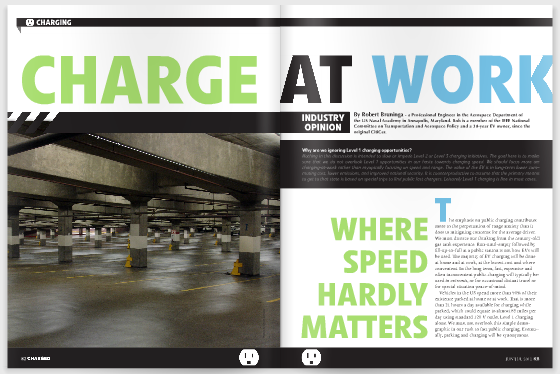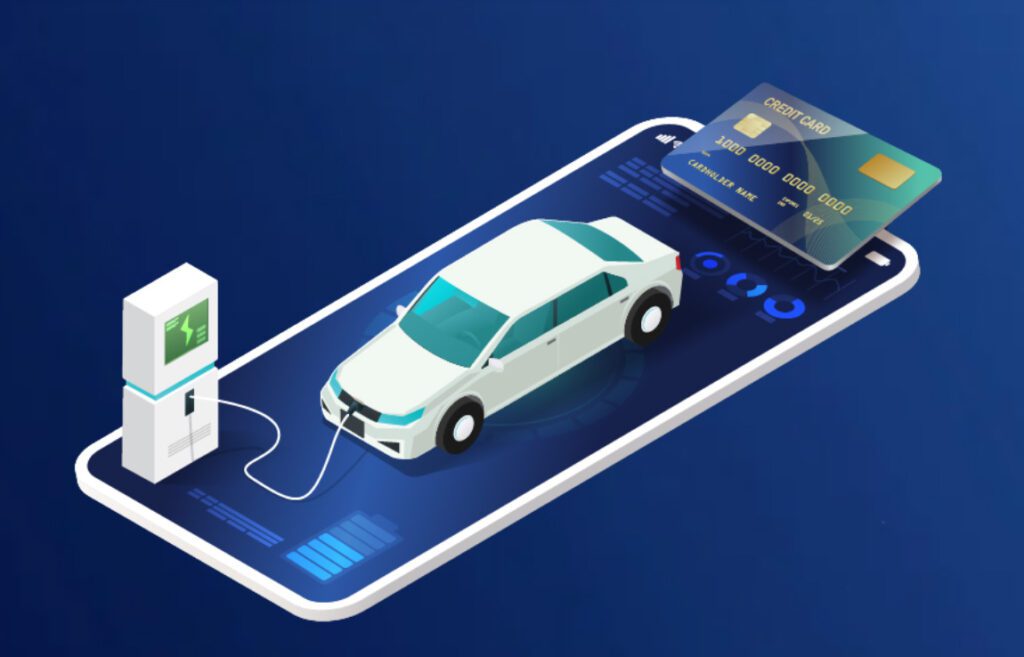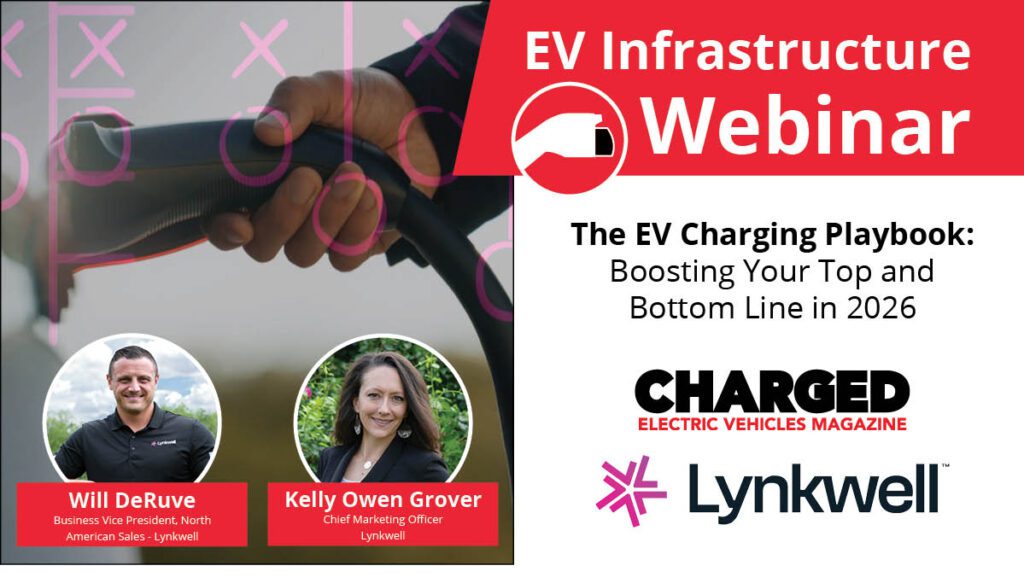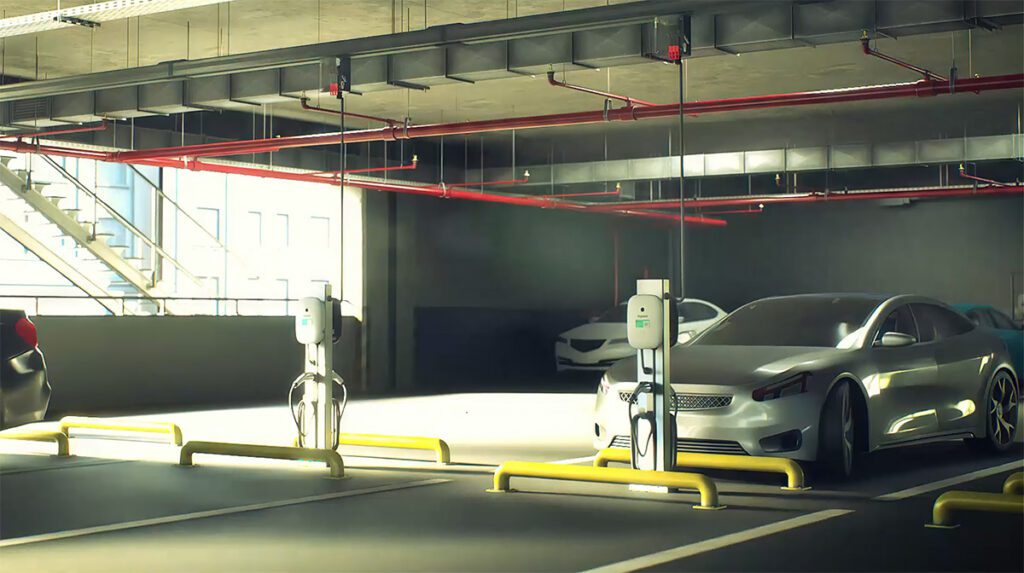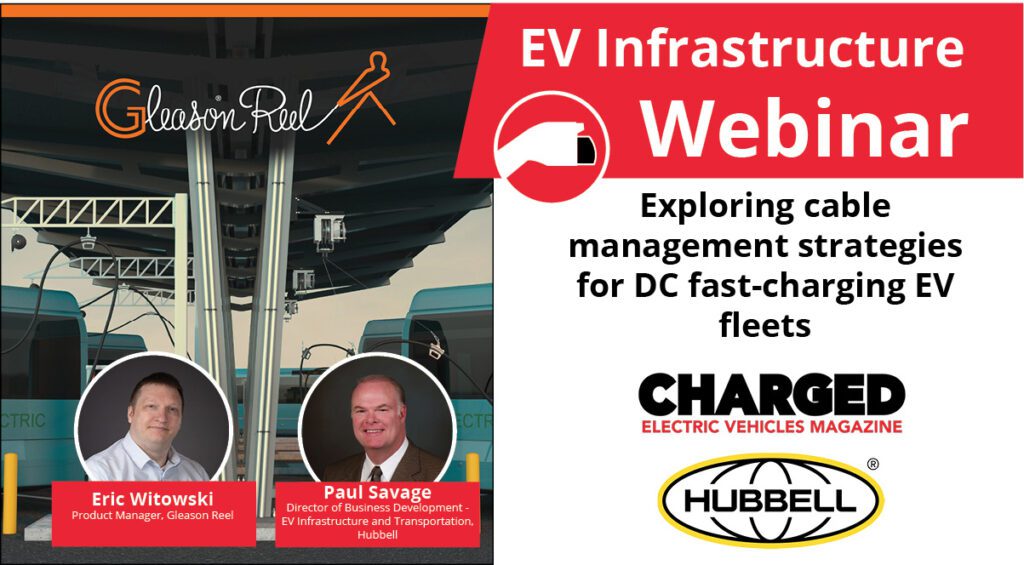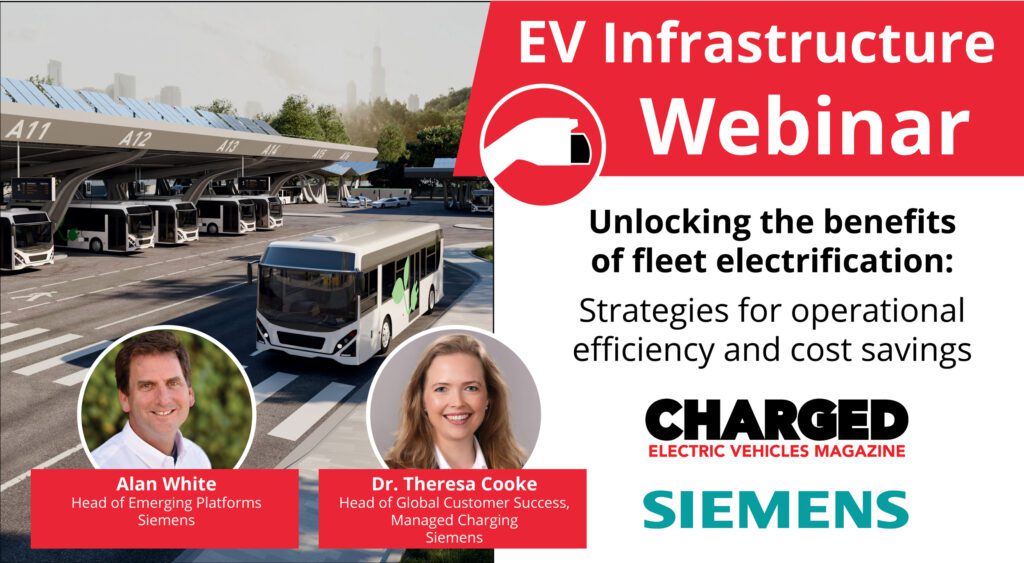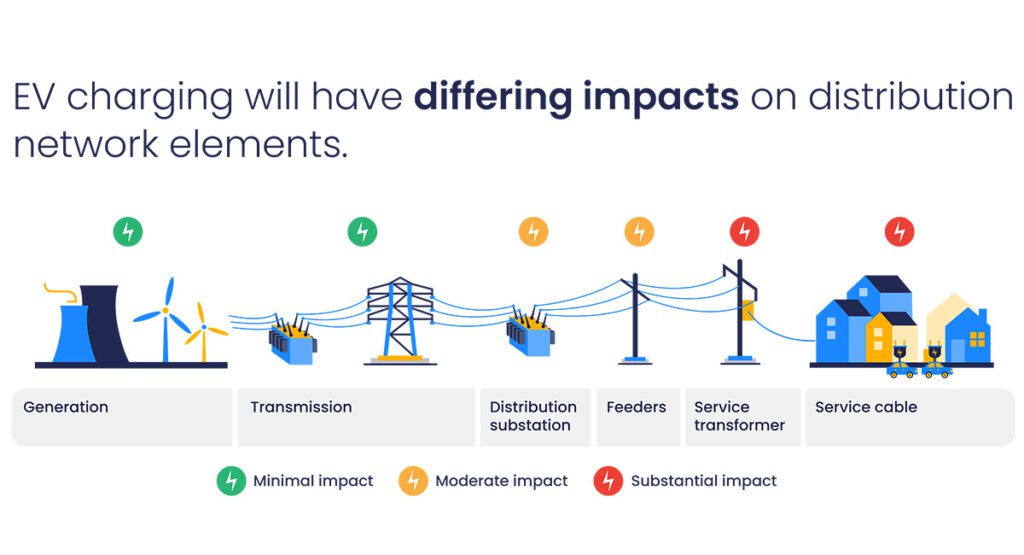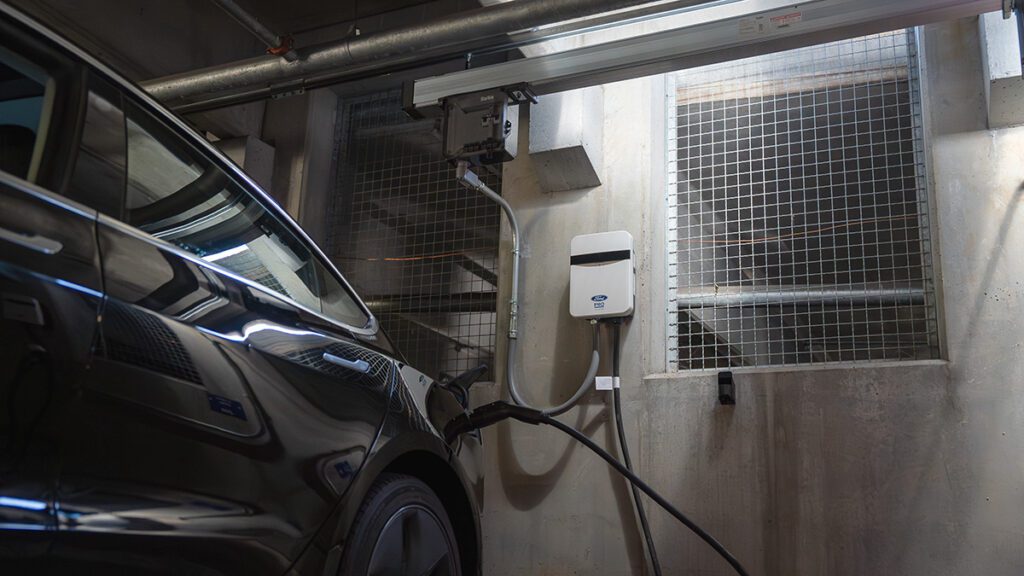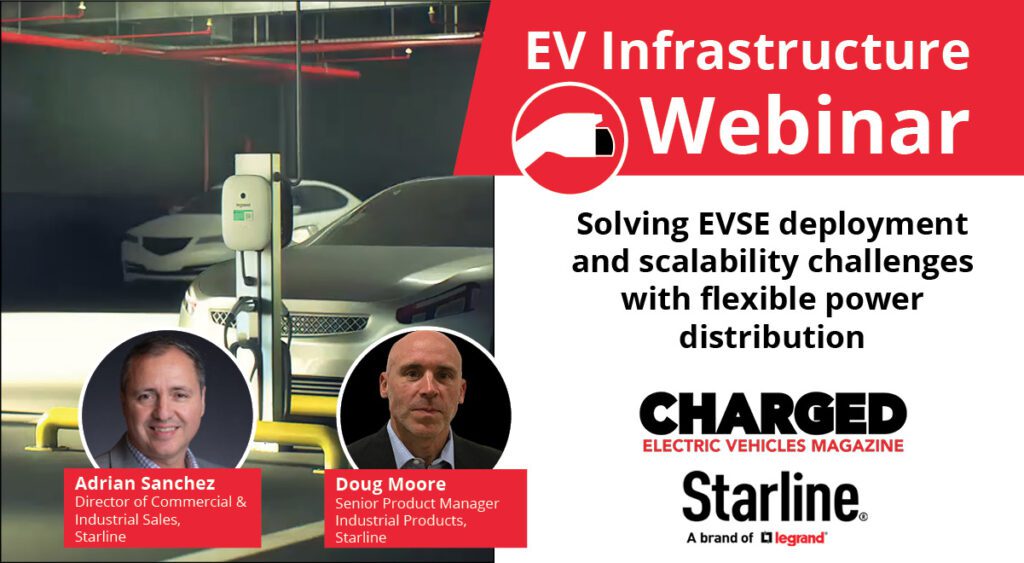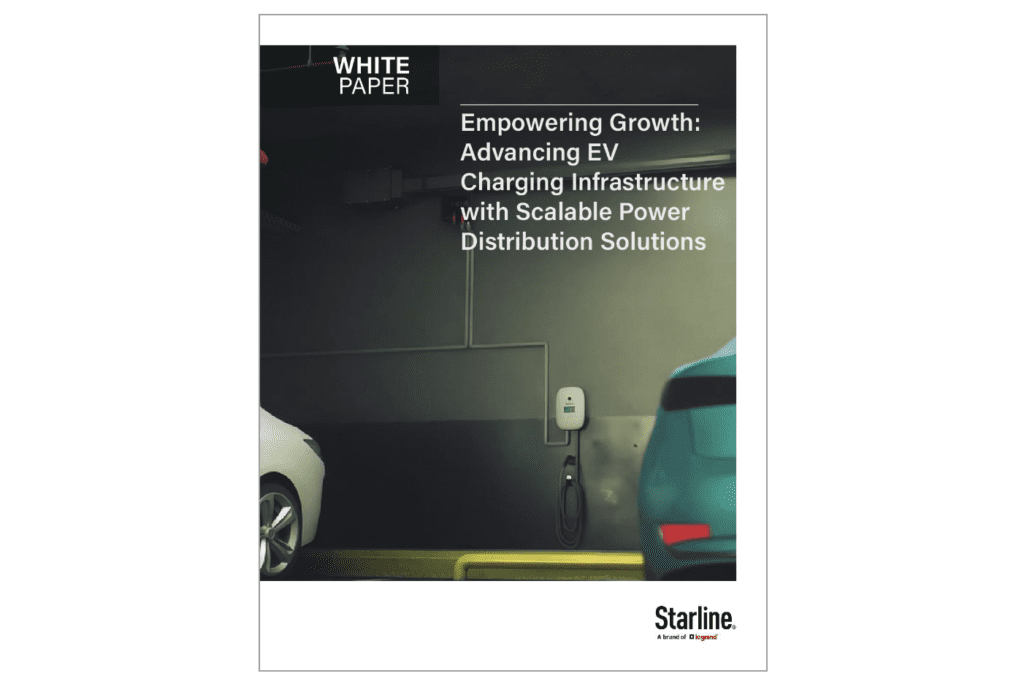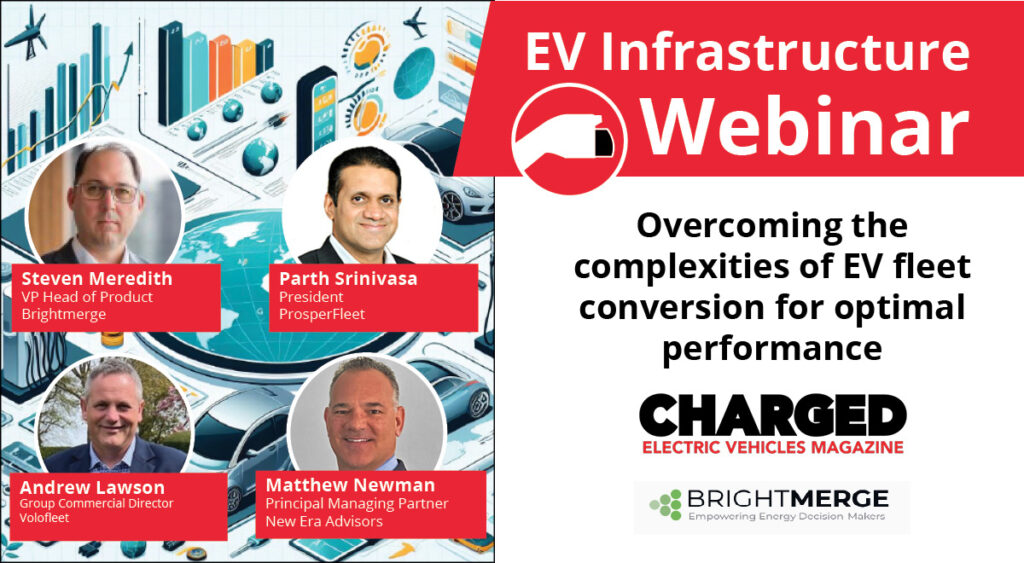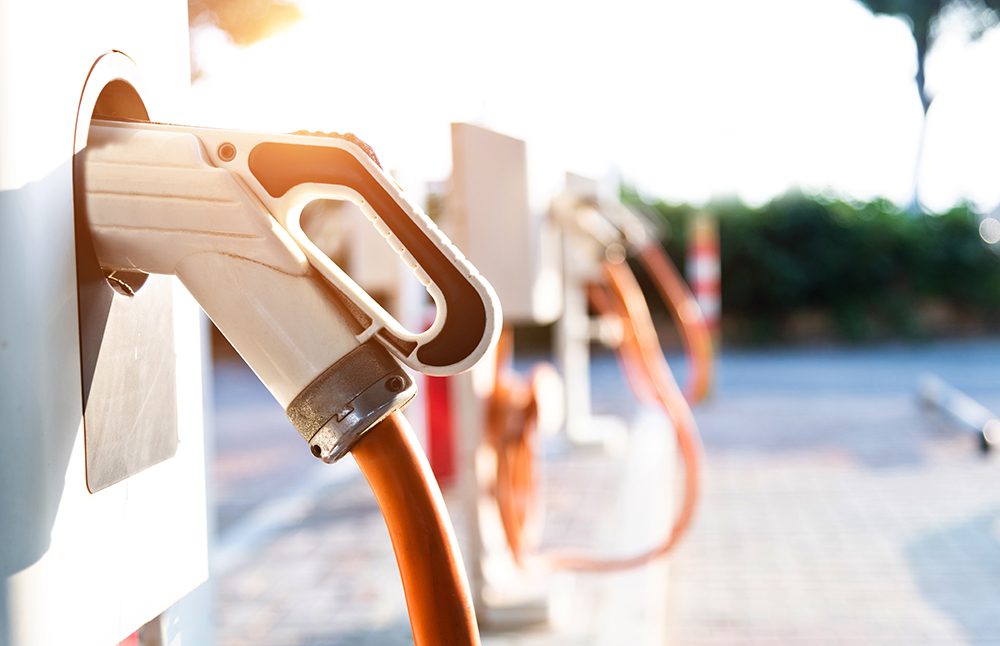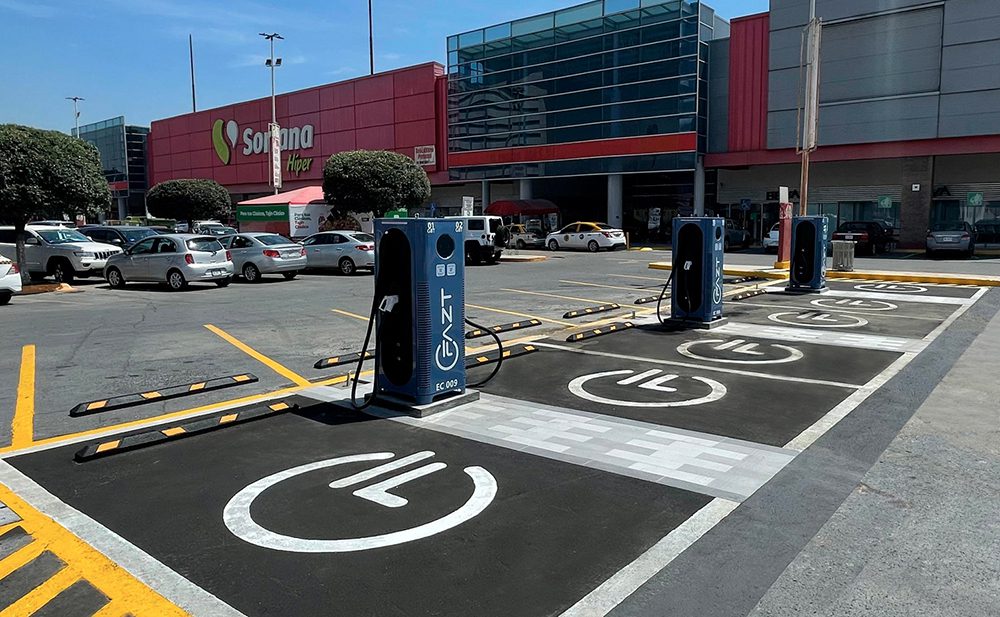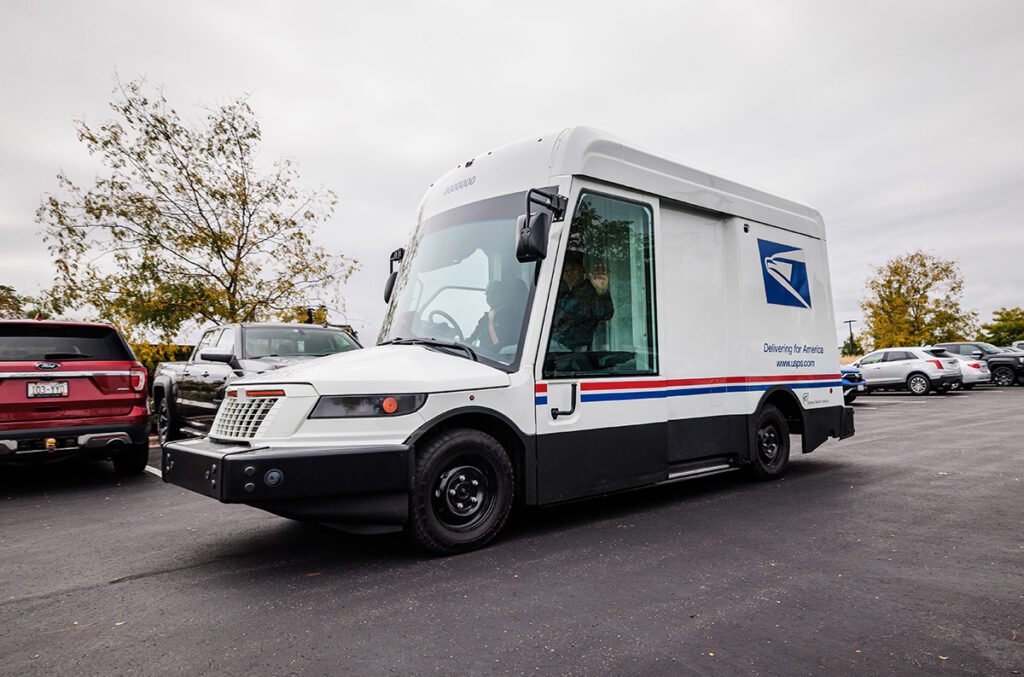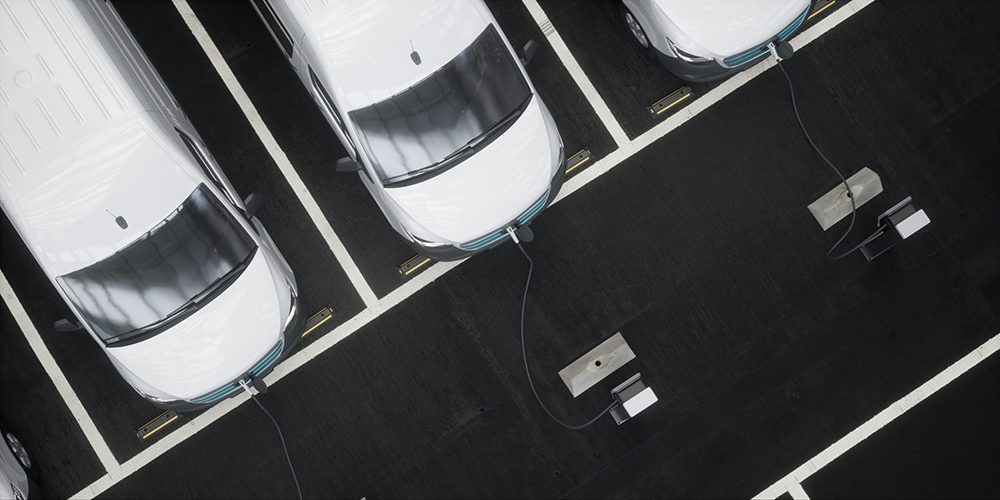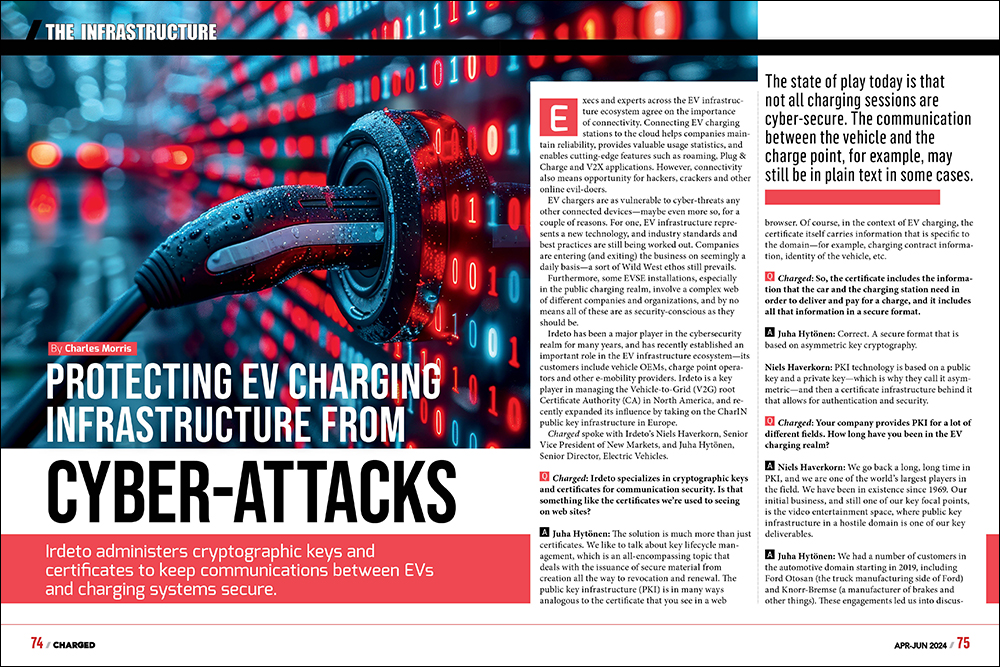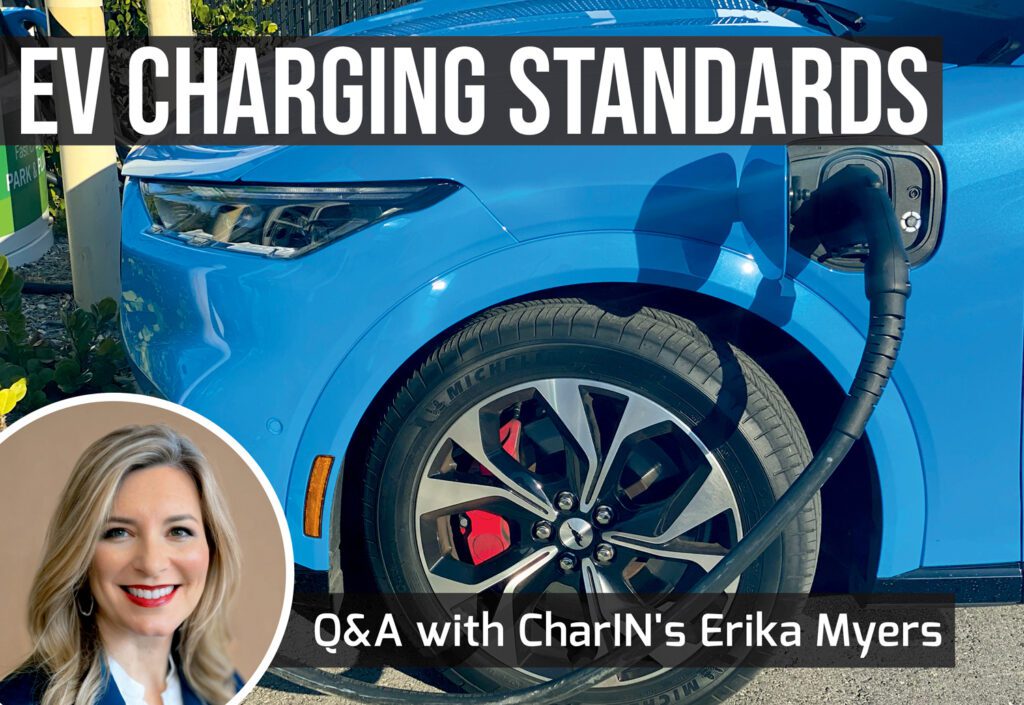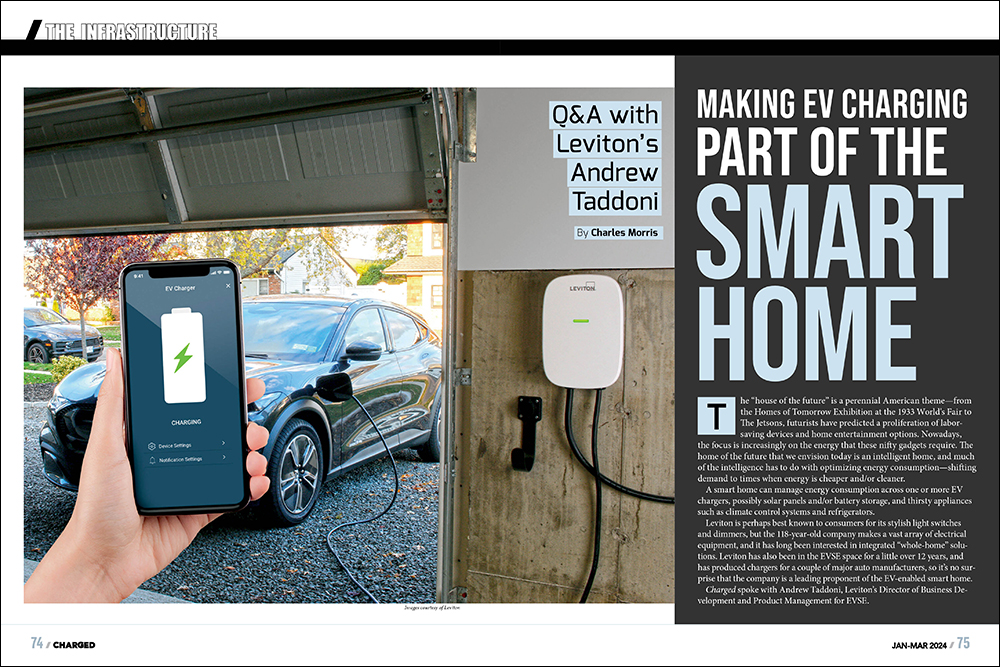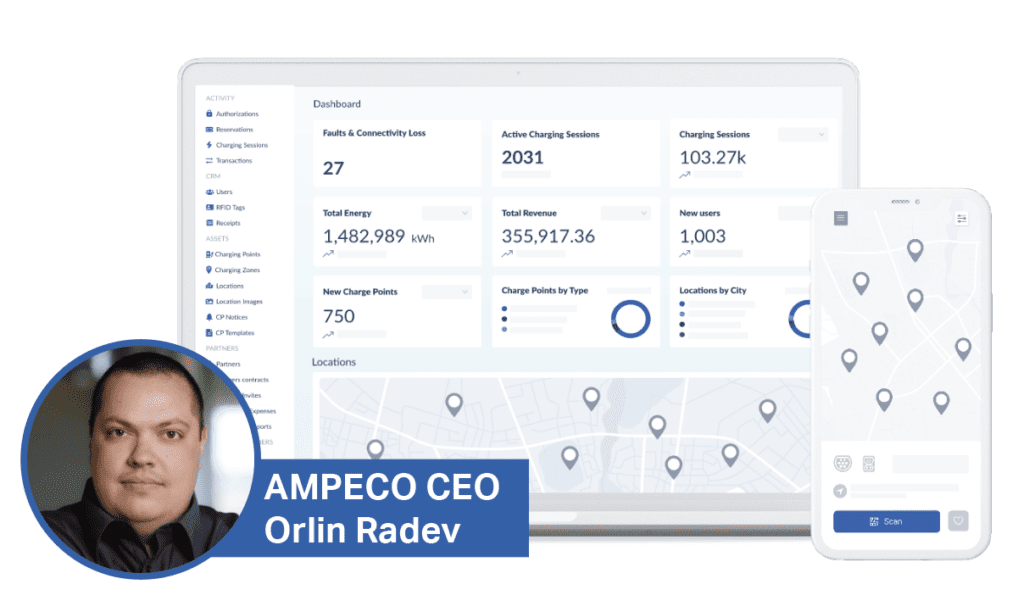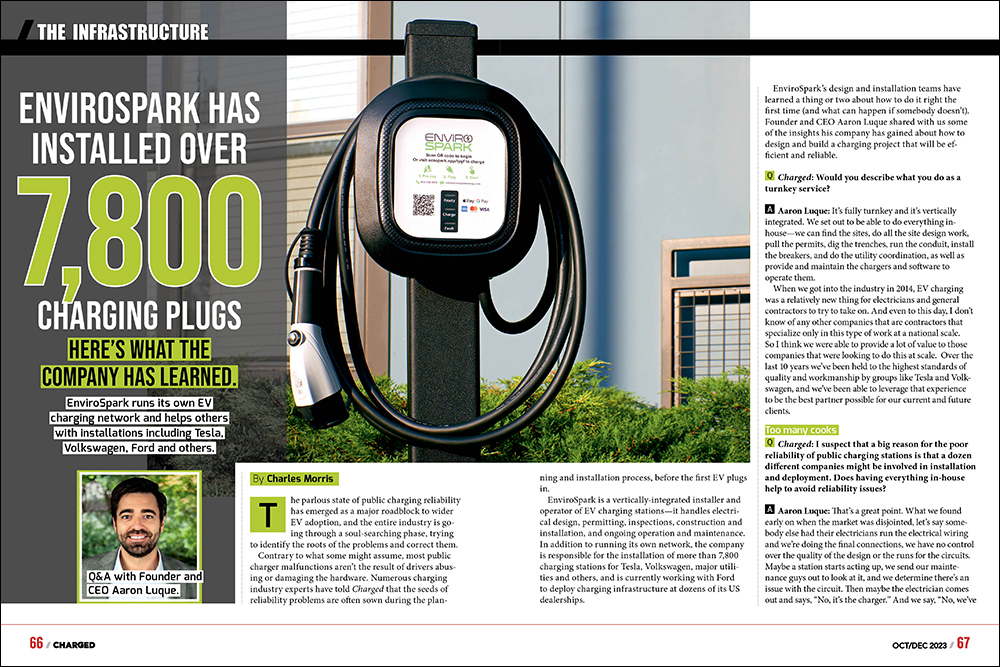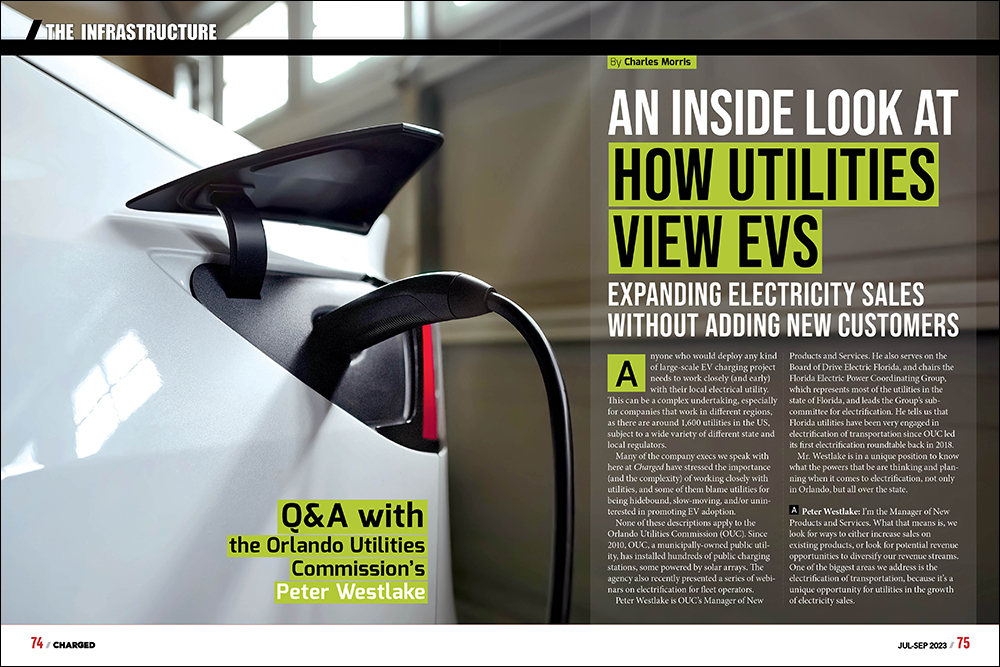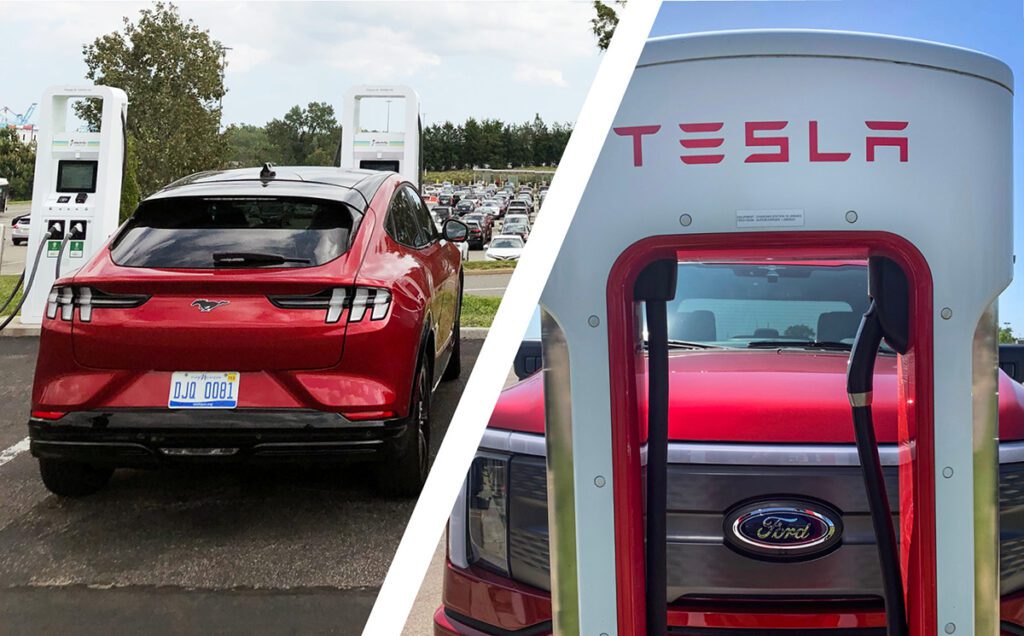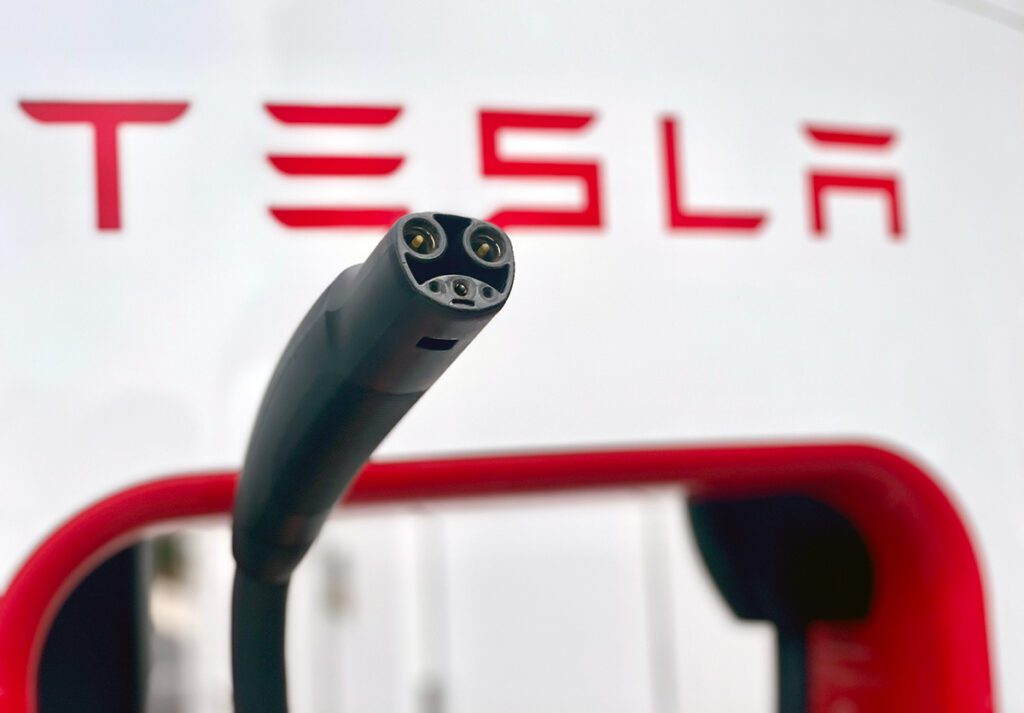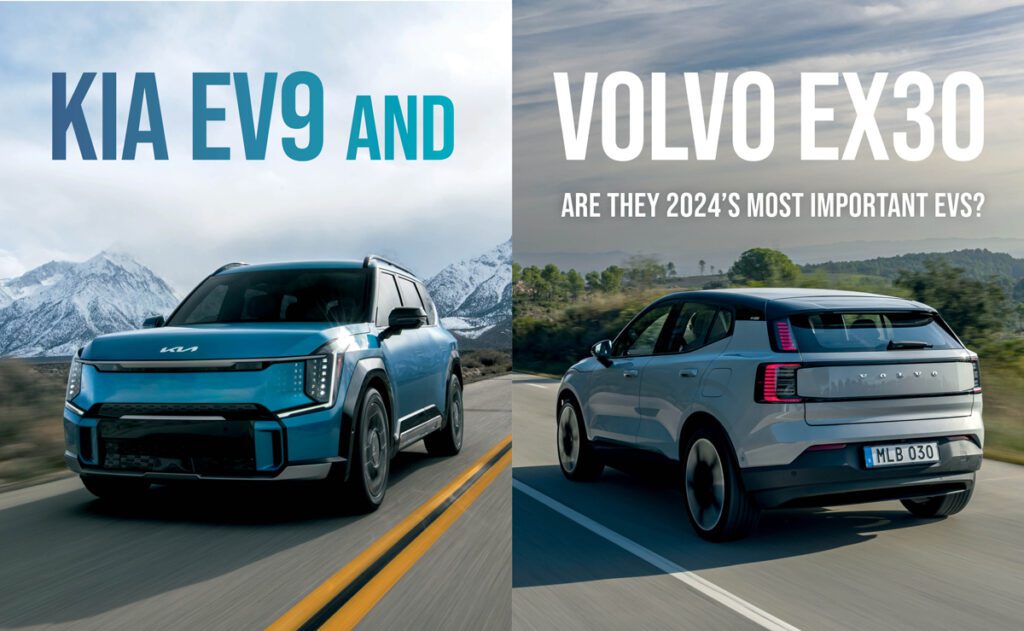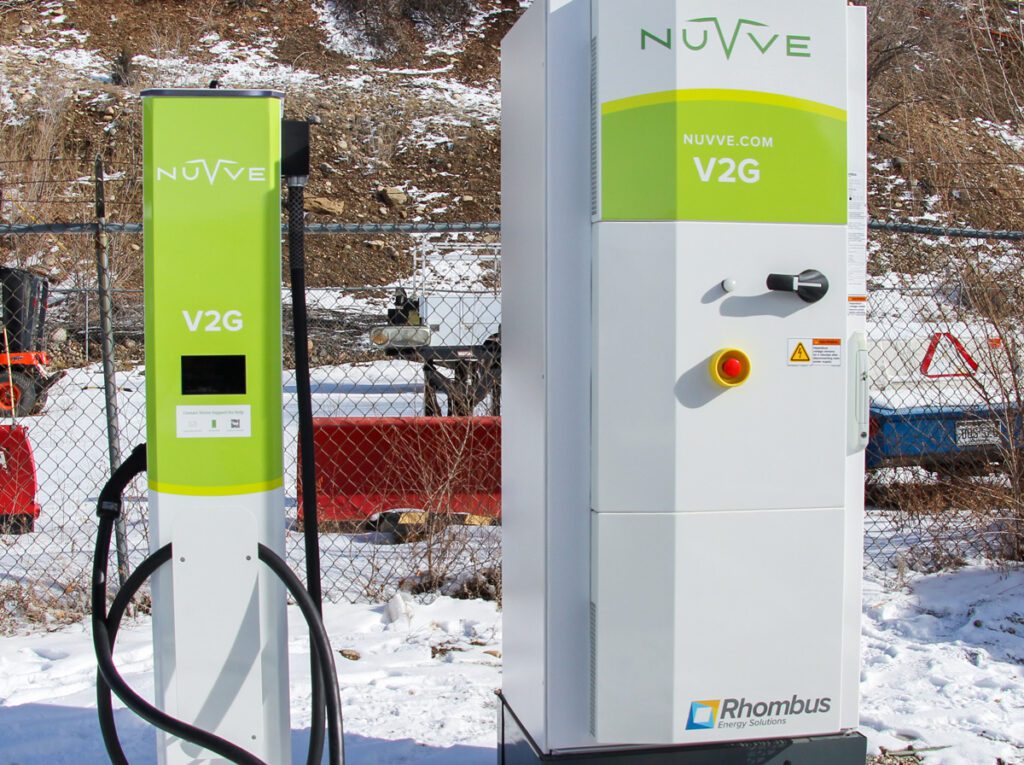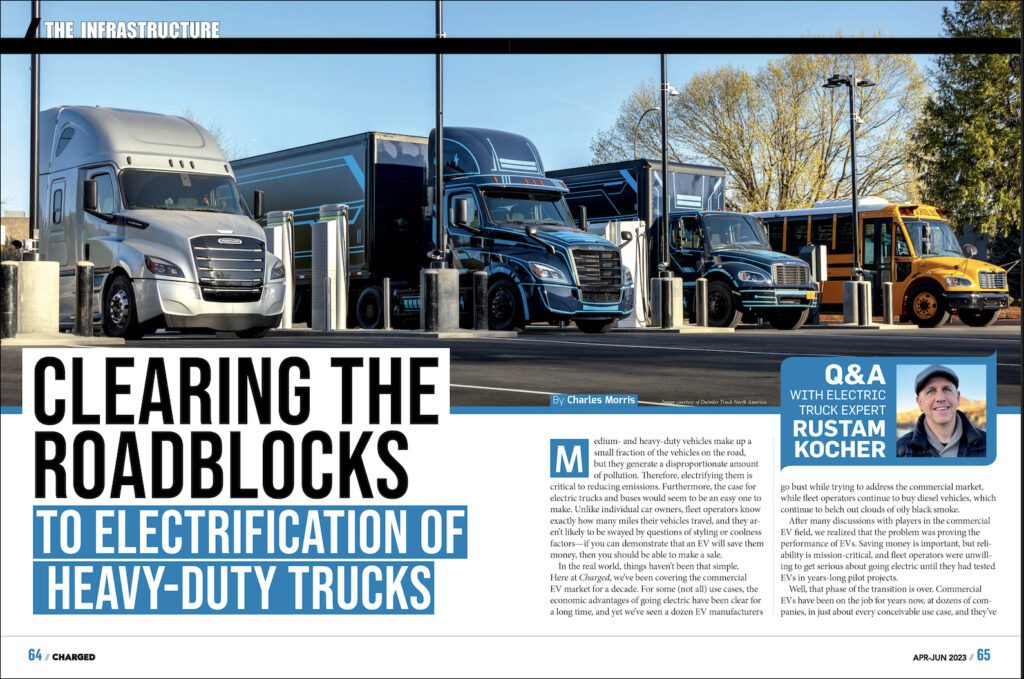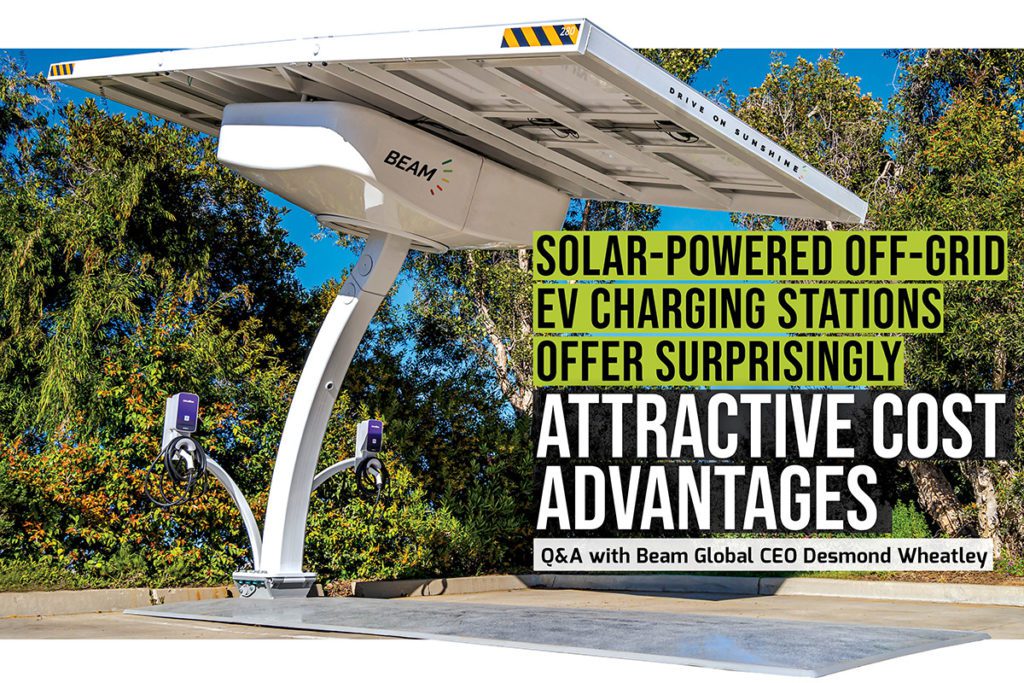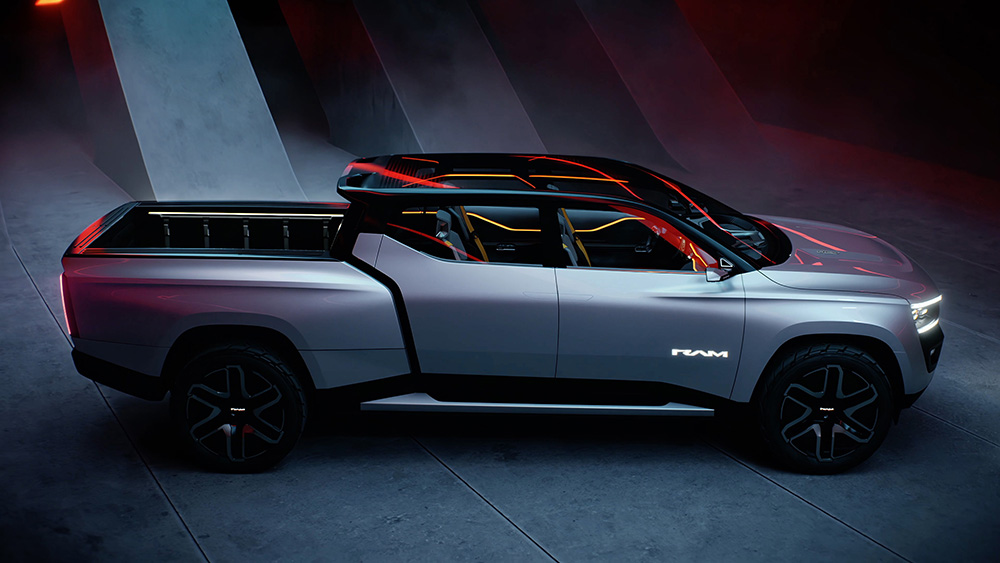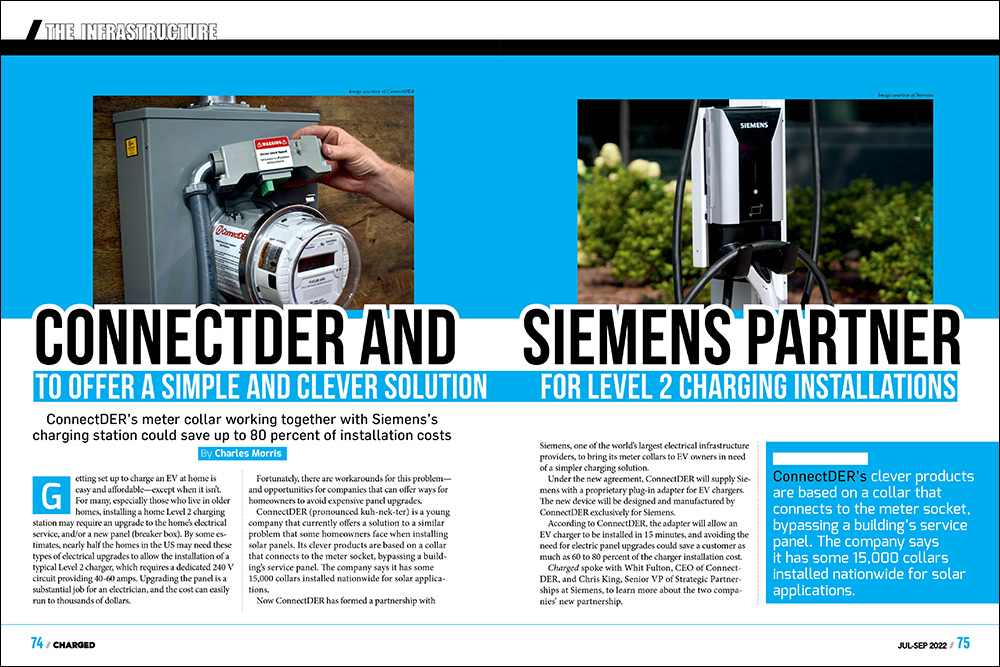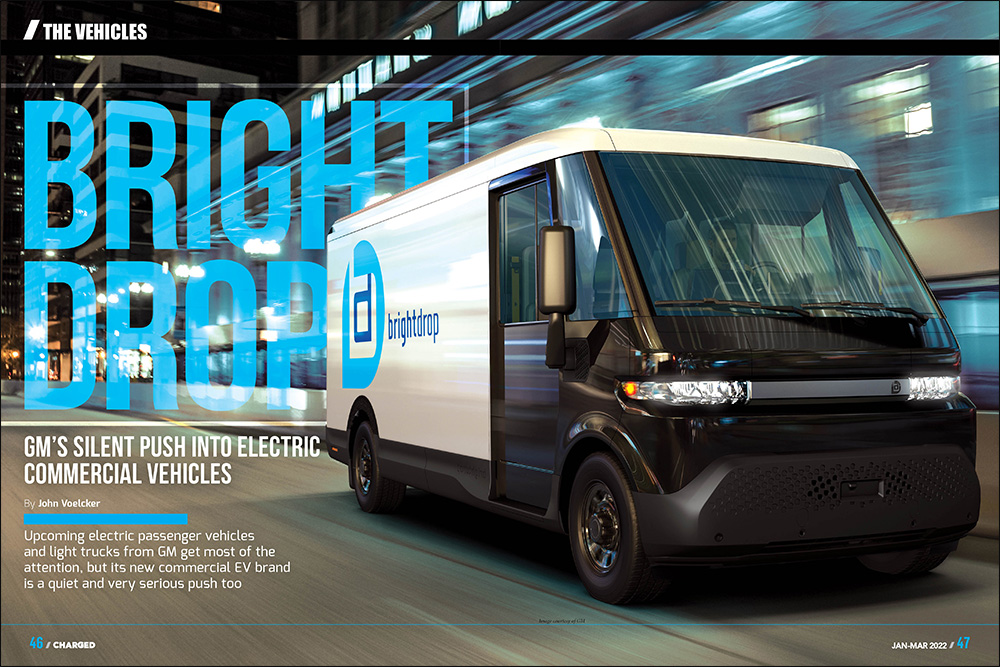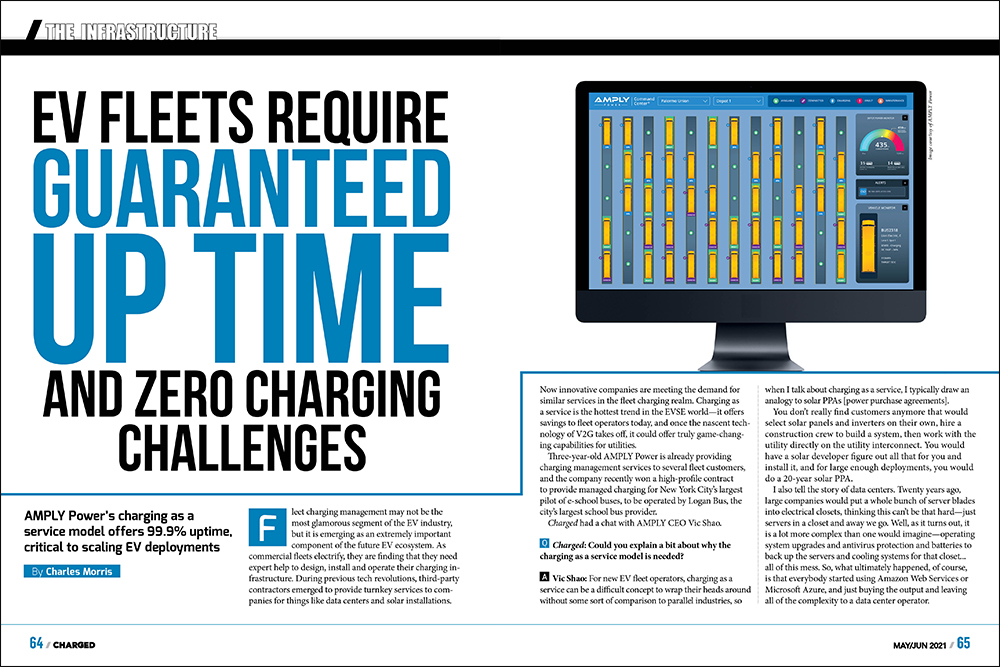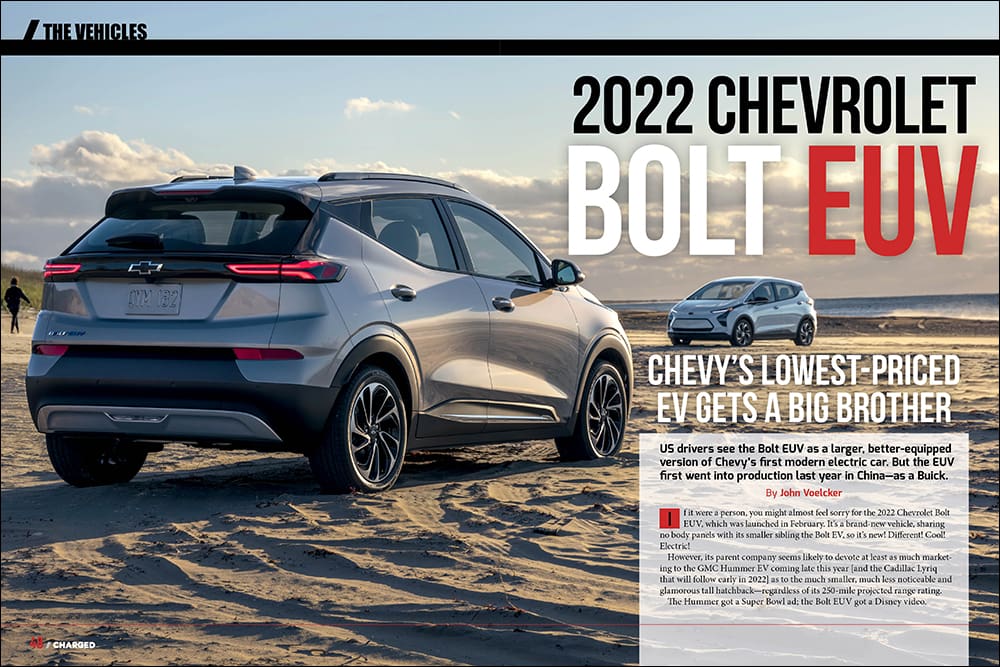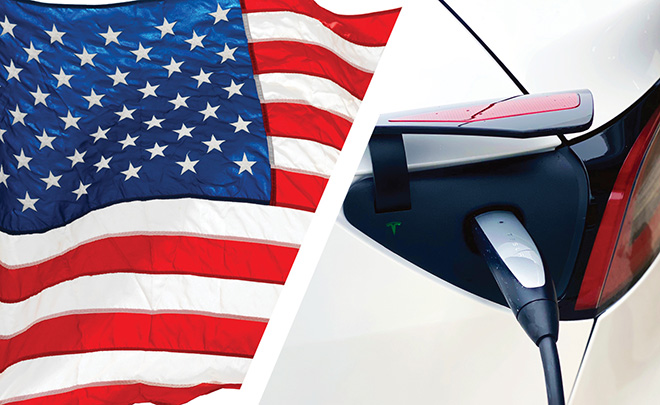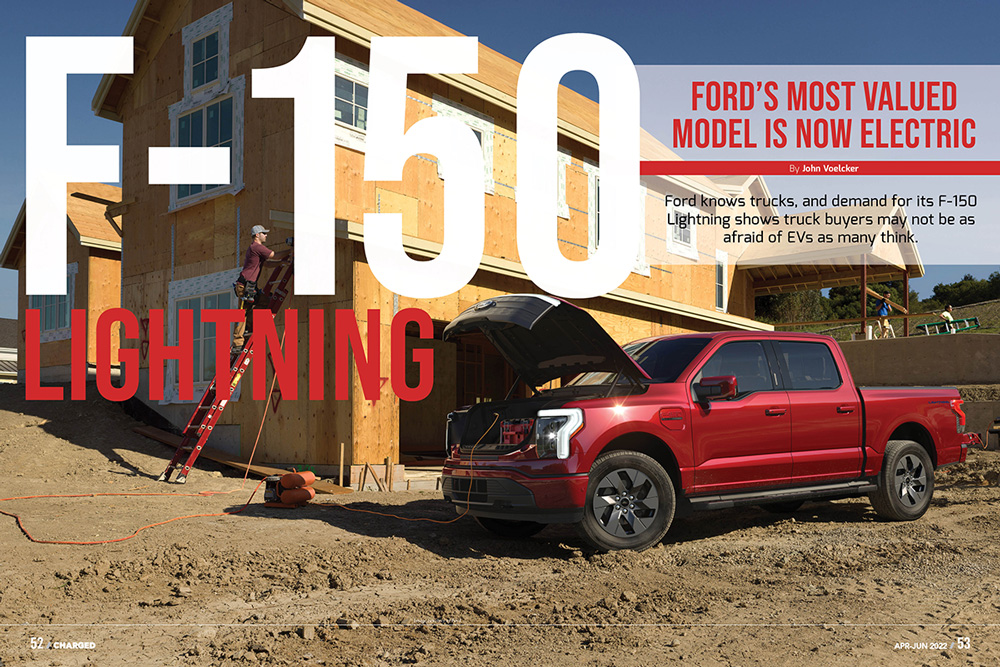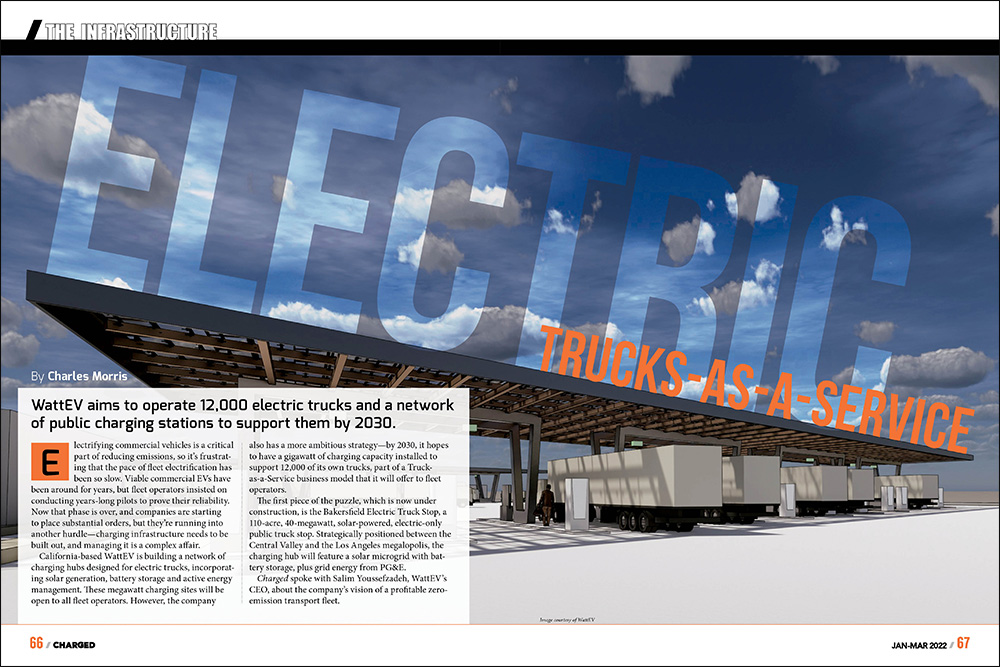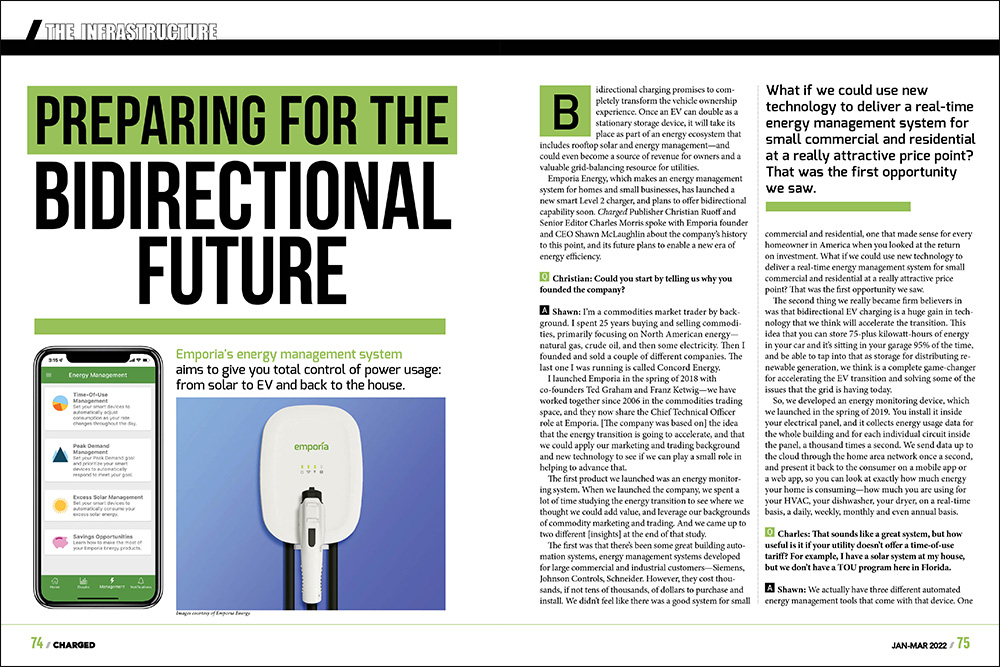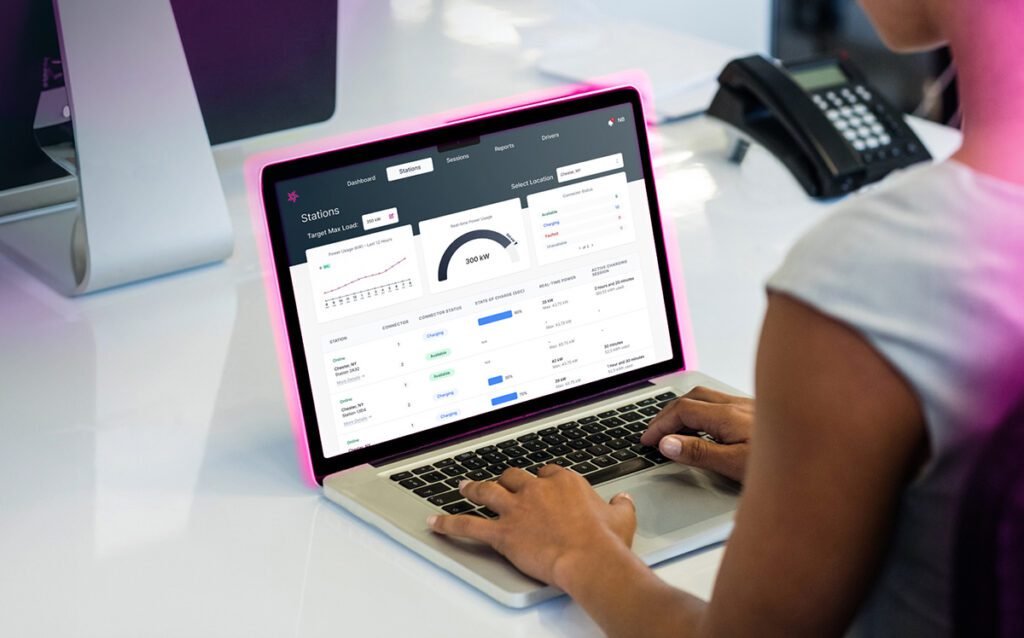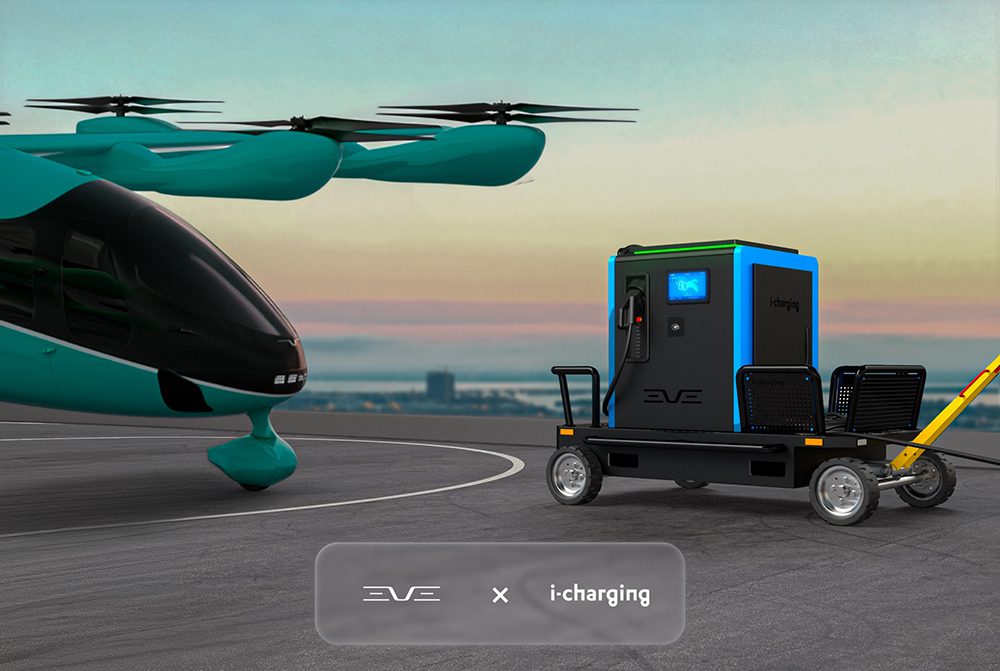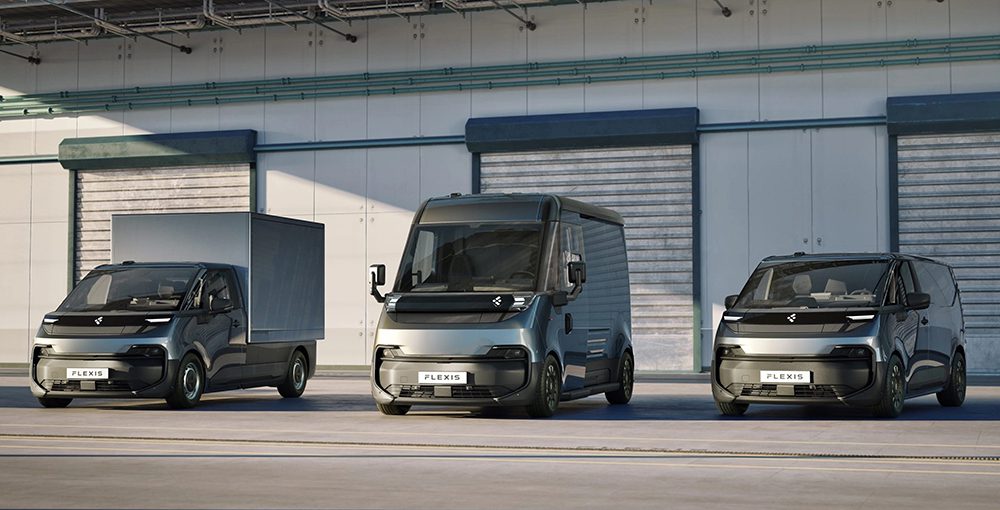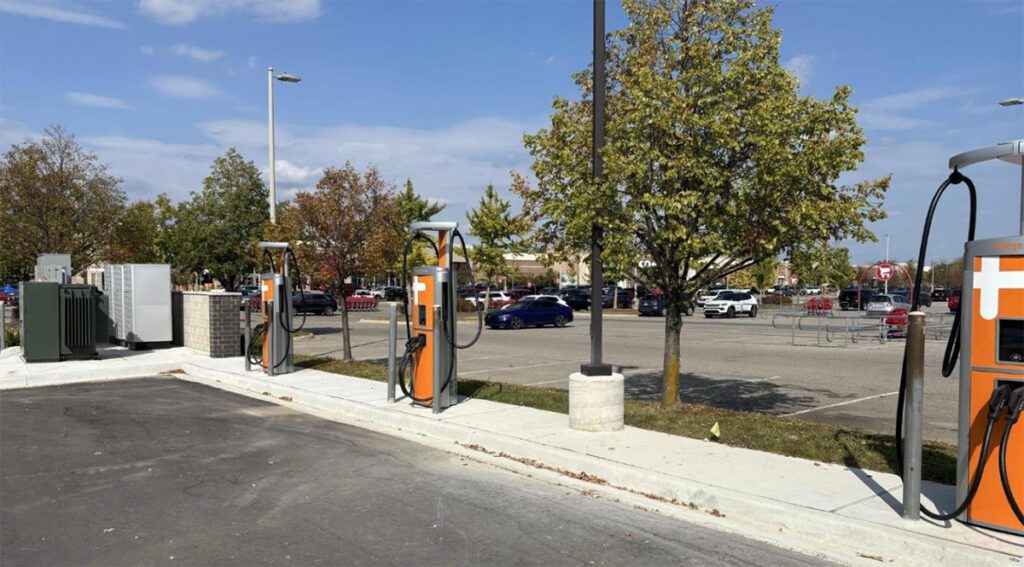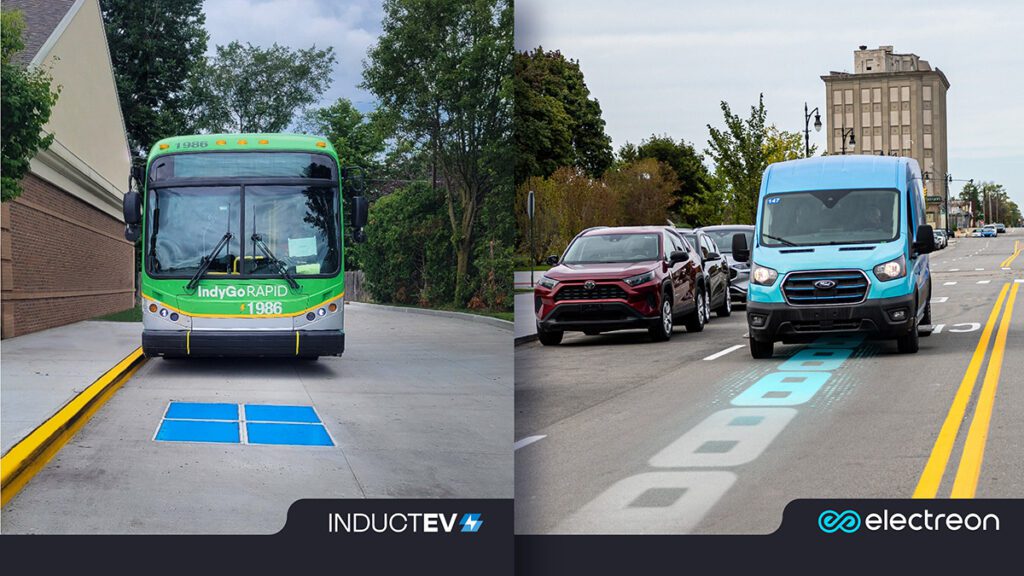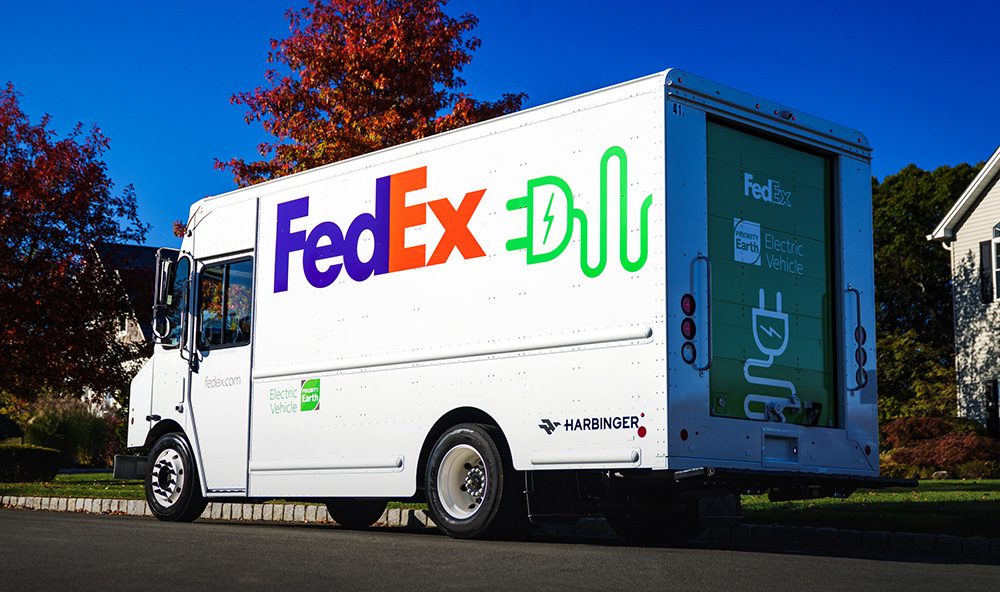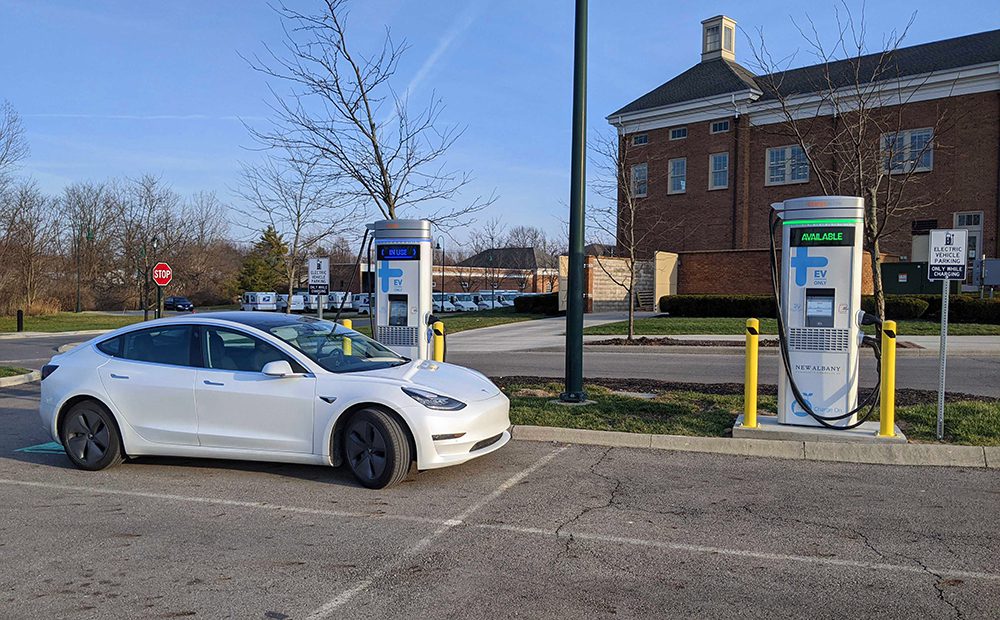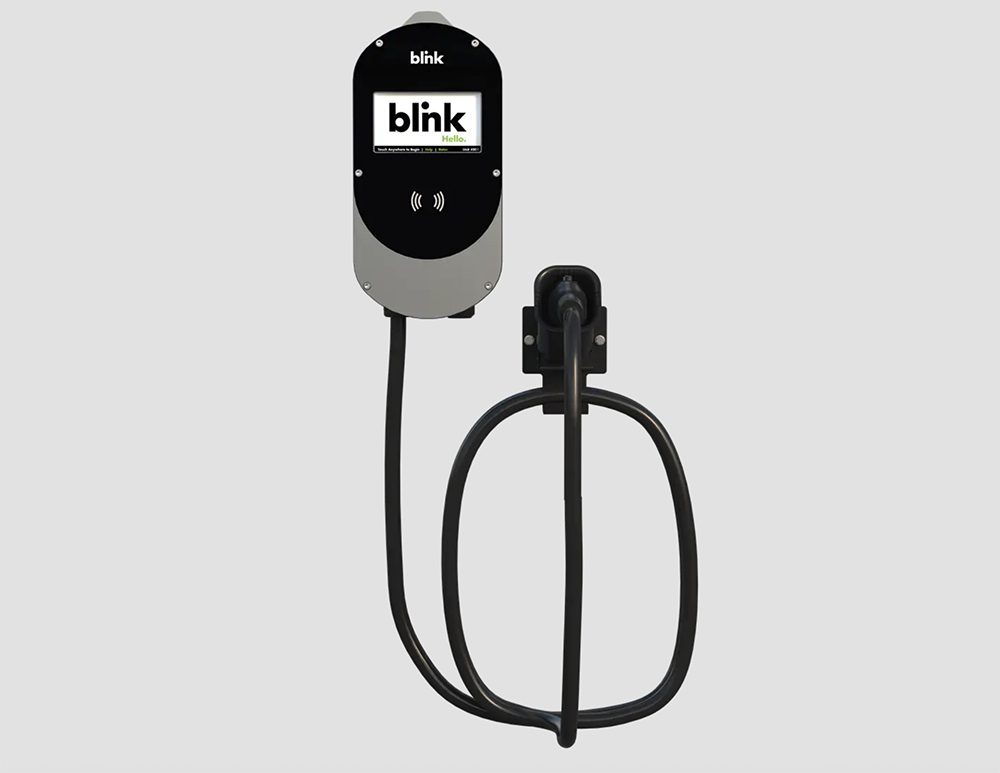Industry Opinion: Robert Bruninga is a Professional Engineer in the Aerospace Department of the US Naval Academy in Annapolis, Maryland. Bob is a member of the IEEE National Committee on Transportation and Aerospace Policy and a 30-year EV owner, since the original CitiCar.
Why are we ignoring Level 1 charging opportunities?
Nothing in this discussion is intended to slow or impede Level 2 or Level 3 charging initiatives. The goal here is to make sure that we do not overlook Level 1 opportunities in our haste towards charging speed. We should focus more on charging-at-work rather than myopically focusing on speed and range. The value of the EV is in long-term lower commuting cost, lower emissions, and improved national security. It is counterproductive to assume that the primary means to get to that state is based on special trips to find public fast chargers. Leisurely Level 1 charging is fine in most cases.
The emphasis on public charging contributes more to the perpetuation of range anxiety than it does to mitigating concerns for the average driver. We must divorce our thinking from the century-old gas tank experience. Run-until-empty followed by fill-up-to-full at a public station is not how EVs will be used. The majority of EV charging will be done at home and at work, at the lowest cost and where convenient. In the long term, fast, expensive and often inconvenient public charging will typically be used in extremis, or for occasional distant travel or for special situation peace-of-mind.
Vehicles in the US spend more than 90% of their existence parked at home or at work. That is more than 21 hours a day available for charging while parked, which could equate to almost 85 miles per day using standard 120 V outlet Level 1 charging alone. We must not overlook this simple demographic in our rush to fast public charging. Eventually, parking and charging will be synonymous.
All EVs come with 120 V charge cords, so it is important to look at the charging pyramid. The majority of all charging will be at home. Next will be routine charging at work and only the small tip of the pyramid will be public charging. Public charging can be further separated into “charging-while-parked” such as at retail business locations and “charging-while-waiting” along Interstates, stopping between point A and point B.
What is most revealing about the charging pyramid are the added notes that seem to go against the conventional wisdom of “faster = better.”
First, more than 90% of all commuters can fully recharge on Level 1 cords at home and at work.
Second, the cost of installing Level 2/3 chargers is much greater than simply using existing Level 1 outlets.
Third, the cost of Level 1 electricity is usually half to one fourth the cost at public Level 2/3 chargers.
Fourth, all but the most expensive fast charging is done while the driver is doing something else. The time investment in the charge is not hours but seconds to plug in and seconds to unplug.
The real eye-opener is that the goal of the fastest possible charging is actually the worst of all cases. Because the driver is usually waiting for the charge, the driver perceives it to be the slowest. The long-term promise of the EV is total cost of ownership, and this is undermined by using the most expensive and fastest charger.
Level 2 charging at work
Another revelation comes from looking at commuter travel.
US Department of Transportation statistics tell us that 68% of commuters travel 15 miles or less in one direction. Level 2 charging at work would give them the ability to fully recharge an EV in under an hour. And 90% of all commuters could be fully recharged in under two hours.
While this is a benefit to the retail customer shopping at Walgreens, it makes no sense at work. Level 2 chargers at work or at other eight-hour parking lots waste most of the available charging capacity (83%) when blocked by fully charged cars. It is impractical to expect employees to move their cars during the workday to share a few Level 2 chargers.
Level 1 charging at work
In contrast, an analysis of commuting statistics reveals that 90% of commuters can fully charge in eight hours or less on simple 120 V Level 1 outlets. Commuter EVs arrive at work with a need for charging that correlates with their home-to-work distance. Nearly 70% could be fully charged by noon, and 90% can leave in the afternoon with a full charge for the remainder of their daily activities.
Level 1 charging at work is painless and can also effectively double the daily range for some commuters. Time-to-charge vanishes as an issue, because the car is always fully charged at the start of each trip. Battery capacity also vanishes as an issue, as long as it covers at least half of the daily miles.
Charging Distance vs. Time
We perpetuate range anxiety by focusing on hours-to-full-charge. This ignores the fact that an EV owner will rarely ever run to empty. Instead, we should simply note that the miles-per-charge for an eight-hour at-home or at-work charge period is at least 32 miles. With this metric, neither the size of the battery nor time-to-charge is an issue with Level 1 charging, only the length of the commute.

Paying for work Charging
Due to the public’s gas-tank legacy thinking, there is an obsessive attention to pricing, payment and usage metering.
A gas-tank fill-up can cost from $50 to $75 (usually near empty), but in comparison, it takes only pennies to charge an EV. With half of the charging at home at night, the non-home daily charging generally costs between 50 cents and one dollar a day to maintain a full charge and maximum range. This is a two-order-of-magnitude difference in refueling cost that is not obvious to the general gas driving public.
This misplaced metering and payment concern also drives huge investments in credit card metering and charging complexity, often costing more per charge transaction than the actual cost of the electricity. Fortunately, charging on Level 1 outlets is self-limiting. The most an EV can draw from a 120 V outlet is about $1.80 a day, and only if it sits there for eight hours. EV charging at 120 V is limited to 12 amps, about the same as a coffee pot, and this is independent of the car model, battery capacity or range.
The easiest payment approach for EV commuter car charging is to simply pay the employer (or parking lot owner) in advance for the nominal rate of electricity used for the daily commute to work.
The cost of this pass would be from $8 to $24 per month for 80% of all commuters. These pay-to-plugin passes can be managed by the employer as easily as they presently manage employee parking passes and handicapped placards.








